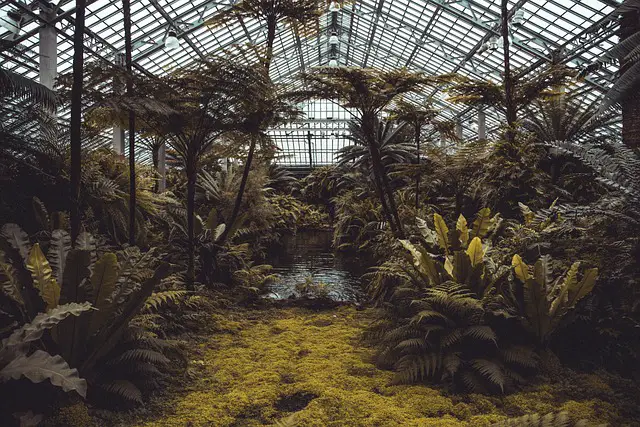Preservation aims to maintain and protect resources in their existing state, while conservation focuses on sustainable use, ensuring resources are wisely managed for the future.
TL;DR Preservation Vs. Conservation
Preservation focuses on maintaining the original state or condition of an object or area. It aims to protect and safeguard valuable artifacts, historical sites, or natural habitats without any alteration or interference. Preservation is often used for cultural heritage sites, rare species of plants and animals, as well as important landmarks that hold historical significance.
Conservation involves sustainable management practices that balance human needs with environmental protection. It emphasizes utilizing resources wisely to ensure their availability for future generations. Conservation seeks to find ways to reduce waste, conserve energy, promote renewable sources of energy, protect biodiversity through habitat restoration efforts and sustainable agriculture practices.
Understanding Preservation

Preservation is a concept rooted in the protection and maintenance of natural, cultural, or historical resources. The primary goal of preservation is to keep something in its original or existing state, safeguarding it from damage, degradation, or alteration. This approach is often applied to artifacts, documents, ecosystems, and historical sites, among other things.
In environmental contexts, preservation is concerned with maintaining ecosystems and biodiversity as they naturally exist. This involves protecting habitats, preventing overexploitation of species, and minimizing human impact to sustain the delicate balance of nature. By preserving ecosystems, we strive to safeguard the unique and diverse array of plant and animal life, contributing to the overall health and resilience of the environment.
In cultural and historical contexts, preservation may involve the protection of artifacts, structures, or traditions. This could include measures to prevent decay, degradation from environmental factors, or damage due to human activities.
Museums, archives, and heritage sites often employ preservation strategies to ensure that future generations can appreciate and learn from the cultural and historical richness of the past. Overall, preservation embodies a commitment to safeguarding the integrity and authenticity of our natural and cultural heritage for the benefit of present and future generations.
Understanding Conservation

Conservation is a holistic approach aimed at the sustainable management and responsible use of natural resources to ensure their longevity. Unlike preservation, which seeks to maintain things in their original state, conservation acknowledges the necessity of human utilization but emphasizes responsible practices. It involves finding a balance between meeting present needs and preserving resources for future generations.
In the realm of environmental conservation, the focus is on safeguarding ecosystems, habitats, and biodiversity. This involves strategies such as habitat restoration, wildlife management, and sustainable forestry or fisheries practices. Conservation recognizes that human activities impact the environment, and its goal is to mitigate these impacts through careful planning and resource management.
Conservation extends beyond the natural world to include cultural and historical aspects. Efforts to conserve cultural heritage may involve sustainable tourism, adaptive reuse of historical structures, or documentation of traditional practices. By integrating environmental and cultural conservation, societies aim to foster sustainable development that respects both the natural and cultural diversity of the planet.
In essence, conservation embodies a forward-thinking mindset, promoting responsible resource use and the preservation of ecological and cultural integrity. It recognizes the interconnectedness of human societies and the environment, seeking solutions that benefit both in the long term.
Preservation Vs. Conservation – Key differences
| Feature | Preservation | Conservation |
|---|---|---|
| Goal | Maintain in original state | Sustainable use and responsible management |
| Approach | Non-interventionist, minimal human impact | Balances human needs with resource protection |
| Focus | Maintaining existing conditions | Long-term sustainability and resource use |
| Natural Resources | Protects from alteration or degradation | Manages for sustainable use and regeneration |
| Human Interaction | Limited intervention, minimal human impact | Responsible use, considering human needs |
| Biodiversity | May prioritize biodiversity preservation | Balances biodiversity with human activities |
| Cultural Heritage | Preserves cultural artifacts and traditions | Conserves while allowing cultural practices |
| Examples | Wilderness areas, ancient manuscripts | Sustainable forestry, wildlife management |
| Time Frame | Focus on maintaining historical integrity | Looks towards the long-term sustainable use |
| Philosophy | Hands-off" approach to maintain purity | Acknowledges human influence, seeks balance |
| Adaptability | Less adaptable to changing needs | Adaptable strategies for evolving contexts |
The Purpose of Conservation
The purpose of conservation is to sustainably manage and protect Earth’s natural resources, ensuring their availability for present and future generations. It involves responsible stewardship of ecosystems, wildlife, and cultural heritage, aiming to balance human needs with environmental health.
Conservation recognizes the interconnectedness of ecosystems and human societies, striving to mitigate the impact of human activities while promoting sustainable practices. The ultimate goal is to maintain biodiversity, preserve natural habitats, and safeguard cultural richness, fostering a harmonious coexistence between humans and the environment for the benefit of the planet’s long-term well-being.
The Purpose of Preservation
The purpose of preservation is to protect and maintain the original state of natural, cultural, or historical elements. It seeks to safeguard the purity and authenticity of environments, artifacts, or traditions, minimizing human intervention and preventing degradation or alteration.
Preservation is driven by a commitment to preserving the intrinsic value of these entities, ensuring that they endure unchanged for future generations. Whether applied to ecosystems, historical landmarks, or cultural artifacts, the goal is to retain the integrity of the past and present, allowing individuals to connect with and appreciate the unaltered beauty and significance of these elements over time.
Image Credits
Featured Image By – Slavan_Art from Pixabay
Image 1 By – Lindsay Bridge.When re-used, attribute as:Photographer and copyright owner: Lindsay Bridge. CC BY 2.0., CC BY 2.0, via Wikimedia Commons
Image 2 By – Bhargava Marripati from Pixabay








